B2B copywriting is hard.
You’re not just a writer. You’re a writer, psychologist, salesperson, negotiator, researcher, and marketer all rolled into one.
After all, it’s your words that determine if a company will spend thousands of dollars or not.
And the business that hired you expects your great copy to influence that sale.
So if you want to be a freelance B2B copywriter that makes six figures (or more), you can’t settle for being average.
How do you take your copywriting to the next level?
Here’s how.
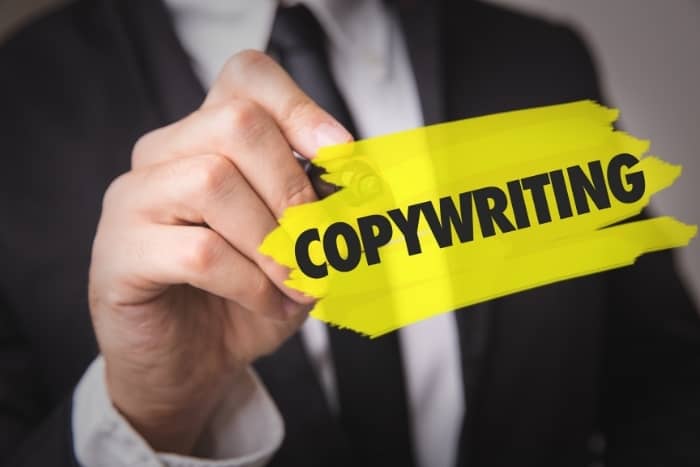
What Is B2B Copywriting?
There isn’t just one definition of copywriting because marketers exist in many niches.
But, simply put, B2B copywriting is creating content on behalf of a business in order to sell to another business.
Is There a Difference in B2B Copywriting vs. B2C?
Unlike B2B, B2C copywriting is geared toward consumers, so the potential customer is free to immediately buy if they feel like your product will benefit their lives.
But for B2B companies, it could take weeks, or even months, of meetings and phone calls with multiple people before they’re finally ready to buy.
At any time during that long, drawn-out process, the company can decide to back out.
To avoid that, your copy must clearly solve a pain point.
Show them how your product or service could increase sales, beat out competitors, or create a better customer experience.
The Most Important Goal of B2B Copywriting
What separates a bad copywriter from a great one?
It’s quite simple actually:
Whether or not you can convince the reader to take action.
After reading your content, did the reader purchase your product or service, request a quote, or sign up for your free trial?
If your target audience doesn’t do something, then your copy didn’t complete its job.
Are Copywriters in Demand?
B2B companies are happy to spend tens of thousands of dollars for a great copywriter.
After all, there are freelancers making six figures or even millions of dollars a year.
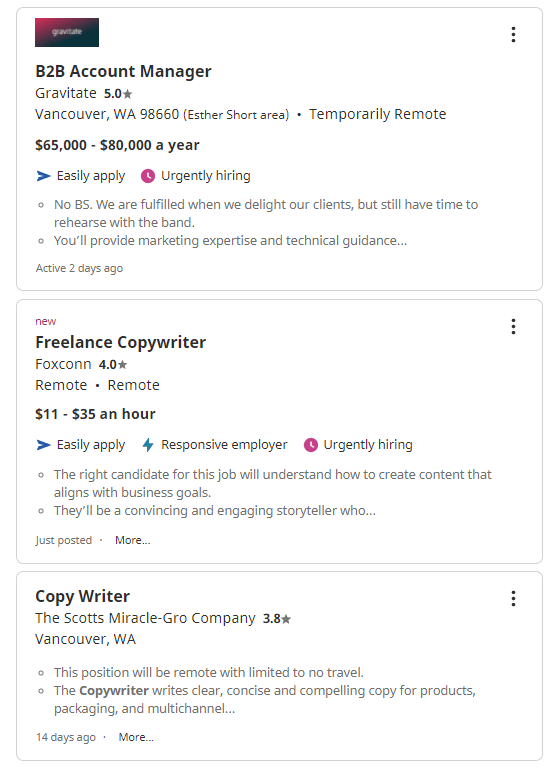
But are businesses willing to spend that money on you?
Finding paid freelance or B2B copywriting jobs isn’t rocket science, but it does require effort.
Anyone who tells you otherwise is probably trying to make a quick buck.
7 Tips for Boosting Your B2B Copywriting
Here’s how you can improve your copywriting and get companies knocking on your door.
1. Master Your Headlines
Your target audience might read your landing page fully if they think you can actually solve their pain point.
But you have less than 15 seconds to convince them to keep reading.
So what’s the best way to maximize that short window?
You need a killer headline.
Bad B2B copywriters try to list a bunch of features in their headlines. Or worse, they try to make them too clever.
But a good headline must clearly state the product’s value.
Below is an example headline from Dropbox. As soon as you land on their web page, this is what you see:

Their headline clearly reflects the pain point they fix: coordinating the exchange of files and documents for multiple team members.
Only later in the website copy does Dropbox switch to describing its features like storage space and team collaboration.
But it started with its value.
2. Create Conflict
Your copy shouldn’t make your audience feel satisfied.
Satisfied readers don’t take action. Readers who feel conflict and tension do.
Good movie climaxes depend on the rising action beforehand. The more tension and conflict, the greater the need to resolve it.
It’s the same with B2B copy.
So how can you create this conflict? You can do this by:
- Describing a problem that your target audience resonates with. They are already familiar with this conflict — you’re just stating the best words to trigger their emotions.
- Comparing your brand to another. Humans are wired to compare and contrast, which Klaviyo takes advantage of here:
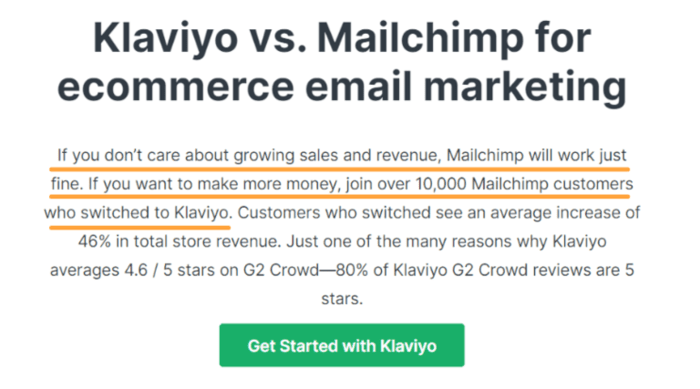
Wow, shots fired.
3. Envision One Person
B2B companies often have multiple people who must agree whether to buy your product or not.
But in the very beginning, there’s one person who decides whether you’re worth talking to at all.
That’s your target audience.
Outback Team Building’s web page reflects this:
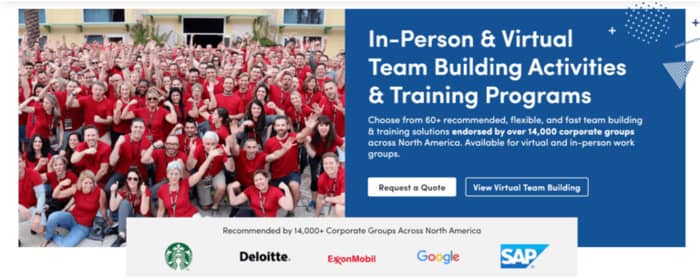
They are targeting the person deciding which company to go with for team activities. Their copy does this by hitting on several points:
- Multiple types of team building programs
- You can request a quote right away
- Multiple corporations have already worked with them
Even though thousands of people might read your content, make sure it resonates with that single decision-maker.
4. Use Long-Form Content Smartly
You worked hard to create a headline that convinces someone you’re worth their time.
Your next priority is explaining why you’re the only choice over their competitors.
To do that, you need long-form content marketing.
Crazy Egg wanted to address potential concerns and provide relevant case studies on their landing page. Adding this information lengthened their homepage 20x longer than the original.
You’d think this would be detrimental to sales, but they ended up converting 30% more.
The reason?
B2B products and services tend to be higher priced and require longer commitments than B2C.
Higher price points mean your target audience needs more information before they can make a decision.
But remember: each sentence or line in your copy needs a purpose. Adding long-form content doesn’t automatically make it more effective.
After this experiment, Crazy Egg changed its homepage again. They kept the long-form content addressing concerns but reduced the fluff.
They shortened the homepage by 60%, which resulted in a 13% conversion increase.
5. Embrace Your Brand’s Voice
In B2B marketing, there’s pressure to stay professional. After all, you’re representing a business.
But professional doesn’t mean boring and bland.
In the age of social media, businesses must also become influencers.
Just look at this LinkedIn social media post from Salesforce:
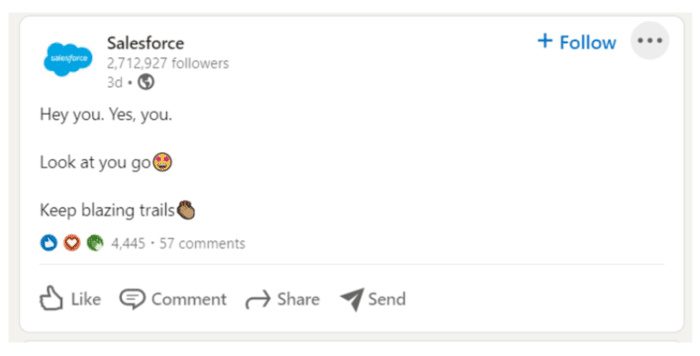
I could see an influencer writing that, couldn’t you?
Whether on social media or a landing page, dare to have a voice to allow your reader to connect with you.
6. Don’t Assume the Reader Knows Your Terminology
Could you assume the person reading your web page has some knowledge of your product?
Yes, that’s a fair assumption.
But assuming they know too much is risky. Not to mention, it can make for some boring copy.
Instead, just write like how you would describe something in real life.
HubSpot has a great example of mixing technical and everyday language:
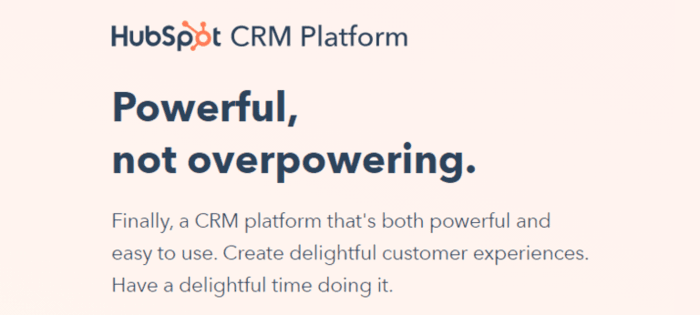
They are assuming their target audience knows what a CRM platform is. Yet, the rest of the copy switches to using everyday language. They don’t dive into the technicals of how their software works.
In real life, we talk simply and tend to throw in technical words when necessary.
Allow your copy to do the same.
7. Balance Facts with Emotions
B2B companies look more at statistics and metrics than the average individual consumer.
But even if you’re selling to a company, it’s still people making the decision to buy or not.
And even though we all deny it, people buy with emotions, not logic. Might as well incorporate both into your content writing to cover all your bases.
Session Media efficiently includes both emotion and logic in their landing page. First, their headline creates emotion:
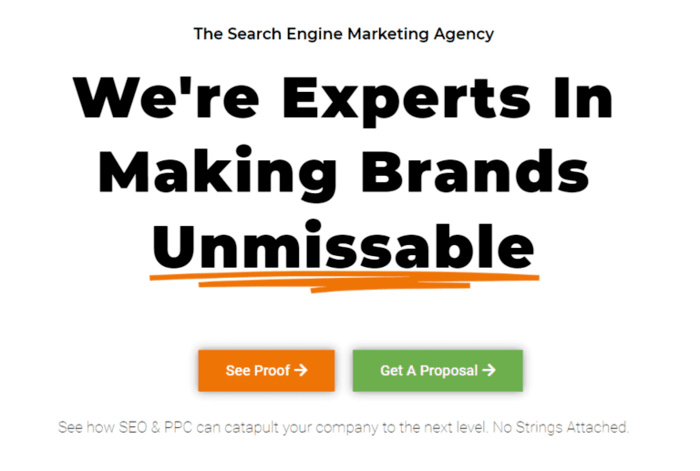
I obviously want people to notice my brand, so they have my attention.
Then later, they use case studies to provide factual support:
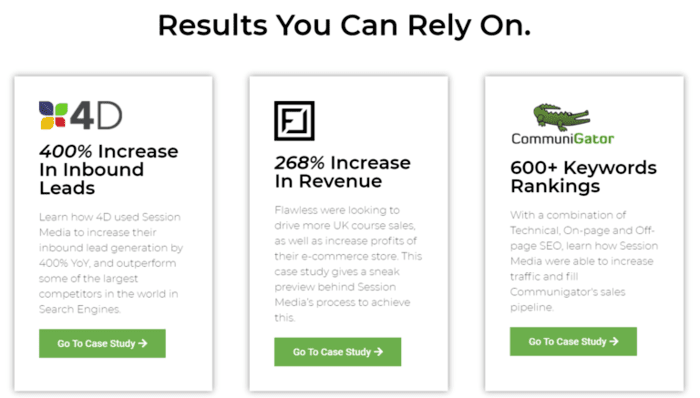
Unmissable brand? 400% more leads? 268% revenue increase?
I want all those things!
It’s also important to pay attention to the specificity of the facts. “268% increase in revenue” is more effective than stating “an amazing way to increase revenue”.
Ready to Use Better B2B Copywriting to Stand Out From the Pack?
Incorporating these tips into your copy will boost your copywriting skills and get you noticed.
If you can inspire someone enough to take action with your writing, you’ve pretty much made it as a freelance B2B copywriter.
In no time at all, businesses will fall over themselves for your expertise.
The post 7 Simple Ways to Amp Up Your B2B Copywriting (+ Examples) appeared first on Smart Blogger.

No comments:
Post a Comment